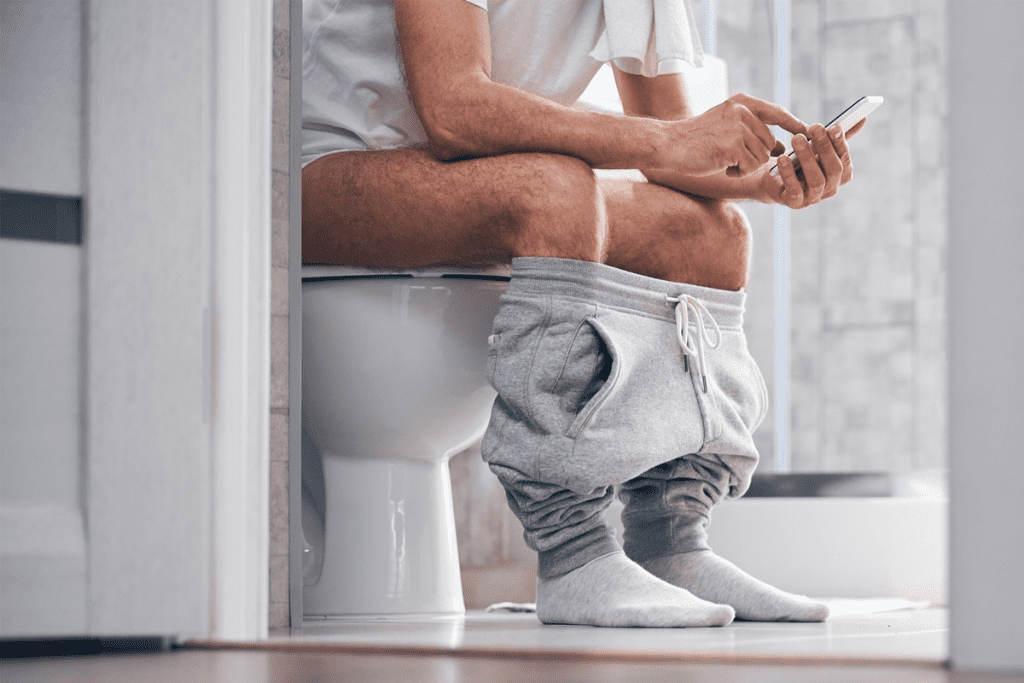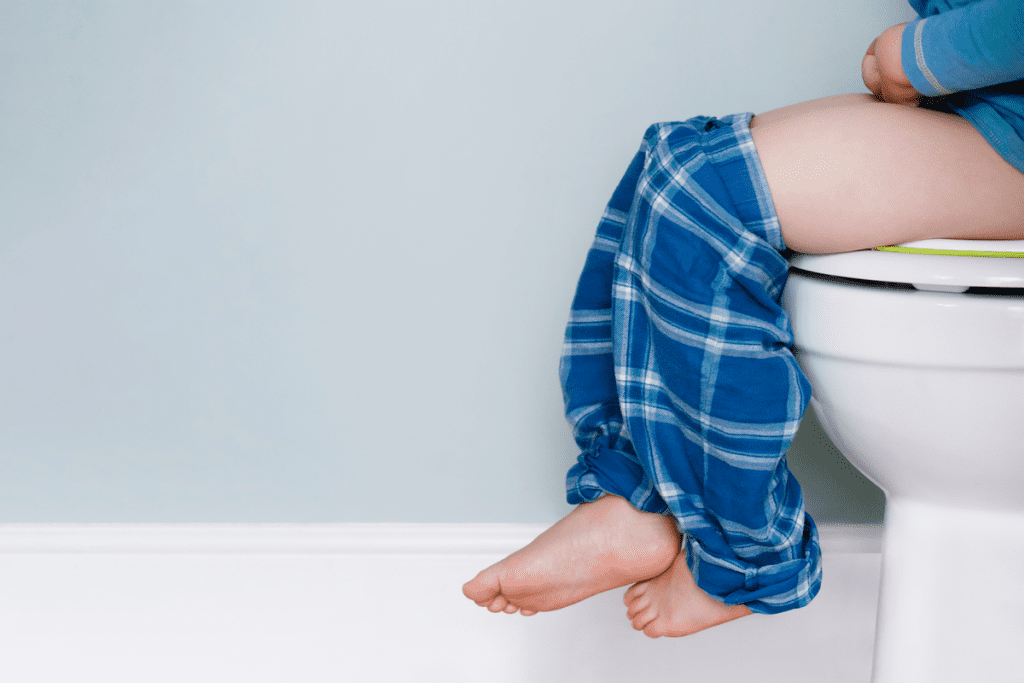Last Updated on October 31, 2025 by
Recent studies have sparked a debate about the best posture for men urinating. They suggest sitting down to pee may be better for prostate health.
We look into the scientific evidence supporting this claim. We focus on clinical research. It shows men with lower urinary tract symptoms (LUTS) and benign prostatic hyperplasia (BPH) may pee better when sitting.

A systematic review and meta-analysis found something interesting. Men with LUTS who sat to pee did better than those who stood. This challenges old habits and brings new ideas to urologic care. We explore the medical consensus on posture for man peeing and its potential impact on urinary flow and the prostate.
Men’s urination methods, whether standing or sitting, affect their urinary system. Urination is a complex process influenced by posture. Studies show posture impacts urodynamic parameters, making it key for male urinary health.

Male urination requires the teamwork of many physiological parts. It starts with the urethral sphincter relaxing, letting urine flow from the bladder. The urethra, longer in men, goes through the prostate and penis.
Posture affects urination flow and ease. Research shows posture impacts flow rate and bladder emptying.
Posture greatly influences urinary flow. Standing can make urine flow less efficient. Sitting, on the other hand, can improve flow by relaxing the urethra.
Sitting down makes urination smoother than standing. It leads to a more relaxed and less strained experience.
Standing to pee puts pelvic floor muscles in a different state than sitting. Standing requires more muscle effort. Sitting, by contrast, relaxes these muscles, making urination more efficient.
Studies show posture’s impact on these muscles is significant. Sitting leads to a more complete relaxation of these muscles, which is good for urinary health.
The prostate’s role in urination is key for men. As men get older, the prostate changes. These changes can affect how well you pee.
The prostate is around the urethra, which carries urine. This close relationship means prostate changes can impact urination. The prostate’s close position to the urethra is why it’s so important for pee health.

Prostate issues like Benign Prostatic Hyperplasia (BPH), prostatitis, and cancer can affect pee. BPH makes the prostate grow, which can block the urethra. For more on BPH and pee problems, check out Iowa Clinic’s article on pee issues related to an enlarged prostate.
Watch for pee changes like needing to go more often, weak pee, or trouble starting. These signs might mean you have a prostate problem. It’s important to talk to a doctor about these changes.
Knowing the signs of prostate issues can help men get help early. If you notice any unusual pee symptoms, see a doctor right away.
New studies show how important the right way to pee is for men. There’s been a lot of talk about how men pee, but new research shows sitting down is best.
Researchers at Leiden University have found key facts about peeing positions. They looked at how different ways of peeing affect men’s health. They found sitting down can help the prostate.
Key discoveries from Leiden University include the importance of pelvic floor relaxation during urination and the effects of posture on urinary flow rates.
In 2014, a big study looked at how peeing positions affect men’s urinary health. It found sitting down to pee can make a big difference. It can improve how well urine flows.
The study also found sitting down can ease some discomfort. It makes peeing better overall.
One important finding is that sitting down to pee can improve flow rate. This is good because it means peeing is more efficient. It lowers the risk of problems with urine flow.
Studies also found sitting down to pee can empty the bladder better. This can lower the chance of getting urinary tract infections. It’s a big plus for men’s health.
By learning about these studies, men can make better choices for their pee health. This can help with some urinary problems and improve their life quality.
Sitting down to pee is more than just comfortable. It also has many health benefits. Let’s dive into these advantages for better urinary health.
Sitting down helps relax the pelvic floor muscles fully. Tense muscles can block urine flow, causing incomplete emptying. This relaxation ensures a smoother pee process.
Gravity helps empty the bladder when sitting down. This makes urination more efficient. It also lowers the risk of infections and other issues.
Sitting down also reduces pressure on the prostate gland. The prostate surrounds the urethra, and pressure can slow urine flow. Sitting down helps avoid this, possibly preventing prostate problems.
Lastly, sitting down reduces strain during urination. Standing can strain the body, leading to long-term issues. Sitting down makes urination healthier.
In summary, sitting down to pee has many benefits. It relaxes pelvic floor muscles, improves bladder emptying, reduces prostate pressure, and lowers strain. Adopting this habit can enhance urinary health and overall well-being.
For many men, how they pee can affect their prostate health and how they urinate. It’s key to know who might benefit from sitting down to pee.
Men with Benign Prostatic Hyperplasia (BPH) or an enlarged prostate might find sitting down to pee helpful. This can ease some urinary problems. It reduces strain on the prostate and improves urination.
Urinary changes are common in men over 40. If you notice weaker flow or more frequent need to pee, sitting down might help. It ensures better bladder emptying and lowers urinary tract risks.
Lower Urinary Tract Symptoms (LUTS) can really affect a man’s life. Symptoms like hesitancy, weak stream, or needing to pee at night can be tough. Sitting down to pee might ease these symptoms by making urination more relaxed and efficient.
Some men find standing to pee uncomfortable or hard. This could be due to prostate issues, urinary tract infections, or other health problems. Sitting down to pee might be a more comfortable and healthier option for them.
Knowing who might benefit from sitting down to pee can help men make better choices. This can improve their prostate health and overall urinary well-being.
Sitting down to pee has many benefits beyond just prostate health. We’ve talked about how it’s good for the prostate. But there are even more advantages to this habit.
Sitting to pee makes the bathroom cleaner. Standing can lead to missing the bowl or splashing, making a mess. Sitting down helps keep the bathroom clean for everyone.
Sitting to pee is also more comfortable. It’s better for men with certain health issues or those who find standing hard. It’s also great for men with mobility problems or recovering from surgery.
For those who wake up to pee, sitting is a big help. It lowers the chance of accidents or falls. Sitting makes nighttime bathroom trips safer and more comfortable.
Sitting to pee also reduces stress and anxiety. It’s easier on the urinary system, which is good for those with UTIs or other issues. It makes going to the bathroom less stressful.
In summary, sitting to pee has many benefits. It improves hygiene, comfort, and nighttime bathroom trips. It also reduces stress and anxiety. So, sitting to pee is good for more than just the prostate.
Choosing to sit or stand while urinating is more than a personal choice. Our look into male urination shows sitting down might be better for prostate health. This is true for men with prostate issues or those noticing changes in their urine.
Sitting down to pee can lead to better bladder emptying and less pressure on the prostate. It also means less strain during urination. While the best posture varies by health needs, knowing the benefits of sitting can help men support their prostate health.
Understanding how men pee and what affects urinary health empowers them to care for their prostate. By considering their health needs and preferences, men can make choices that improve their urinary function and quality of life.
Sitting down to pee can be good for your prostate. It puts less pressure on the gland and helps you empty your bladder better.
Sitting down can make urination flow better. It relaxes the pelvic floor and lowers urethral resistance.
Watch out for weak or interrupted flow, needing to pee a lot, waking up to pee at night, and pain or burning while urinating.
Men with big prostates or BPH, those over 40 with urinary issues, and anyone with LUTS might find sitting down helpful.
Yes, it also improves bathroom hygiene, reduces stress, and is more comfortable, making nighttime urination easier.
How often you pee depends on how much you drink, your age, and health. Most men pee 4-7 times in 24 hours.
Sitting down relieves UTI pain by relaxing the pelvic floor. It reduces strain and helps you pee more efficiently.
Subscribe to our e-newsletter to stay informed about the latest innovations in the world of health and exclusive offers!